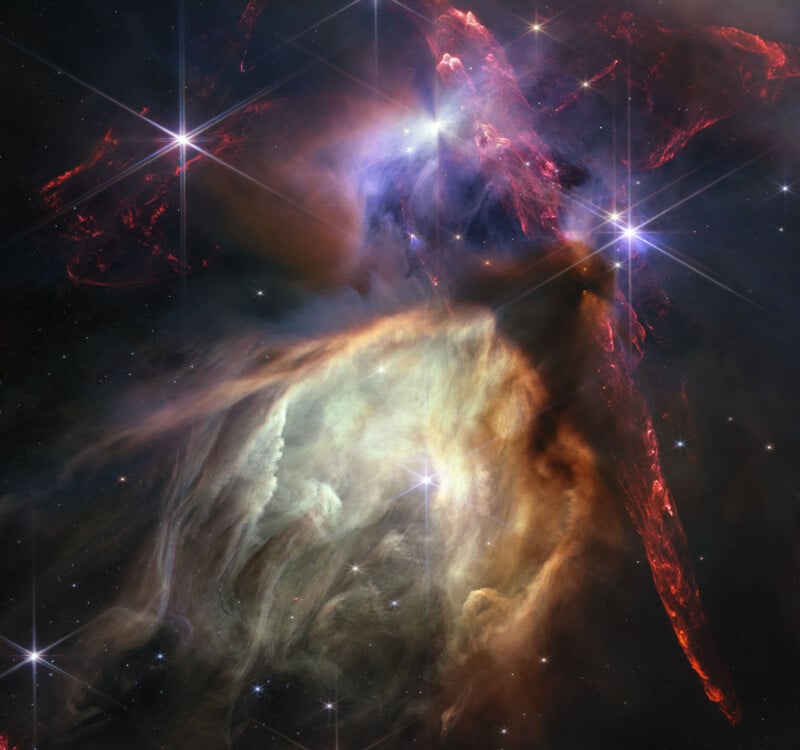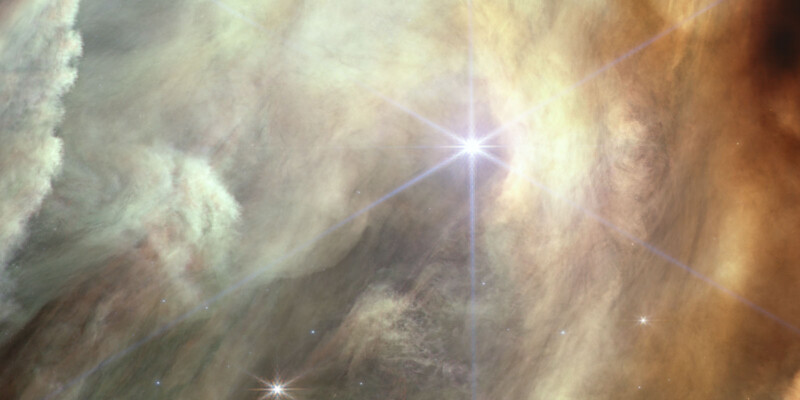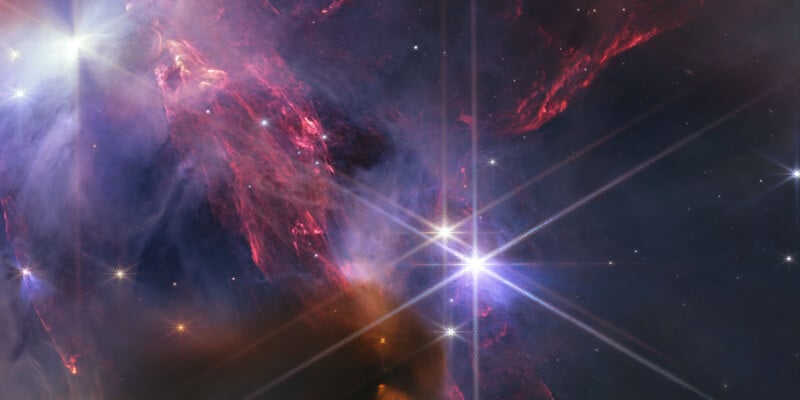Webb Celebrates its First Year with Phenomenal 153-Megapixel Photo of Star Birth

The James Webb Space Telescope is celebrating its first year of scientific operations in style through a massive 153-megapixel image of the Rho Ophiuchi cloud complex, the closest star-forming region to Earth.
“In just one year, the James Webb Space Telescope has transformed humanity’s view of the cosmos, peering into dust clouds and seeing light from faraway corners of the universe for the very first time. Every new image is a new discovery, empowering scientists around the globe to ask and answer questions they once could never dream of,” says NASA Administrator Bill Nelson.
“Webb is an investment in American innovation but also a scientific feat made possible with NASA’s international partners that share a can-do spirit to push the boundaries of what is known to be possible. Thousands of engineers, scientists, and leaders poured their life’s passion into this mission, and their efforts will continue to improve our understanding of the origins of the universe — and our place in it,” Nelson continues.
In its release about the stunning new image, one of NASA’s international partners, the European Space Agency (ESA), writes, “The showcased region contains approximately 50 young stars, all of them similar in mass to the Sun or smaller.”
The star S1 has “carved out a glowing cave of dust in the lower half of the image,” and is the only star in the new photo that is “significantly more massive than the Sun.”

The Rho Ophiuchi cloud complex is about 390 light-years from Earth. Because there are no foreground stars in the intervening space, Webb can capture a highly detailed close-up photo of the stellar nursery.

The darkest areas in the image have the greatest density, where thick dust surrounds still-forming protostars. The red jets that appear horizontally across the upper third of the photo and vertically along the right side are molecular hydrogen. “These occur when a star first bursts through its natal envelope of cosmic dust, shooting out a pair of opposing jets into space,” explains ESA.
Some stars have tell-tale shadows that indicate protoplanetary discs, showing that some future planetary systems are in the making.
“Webb’s image of Rho Ophiuchi allows us to witness a very brief period in the stellar lifecycle with new clarity. Our own Sun experienced a phase like this, long ago, and now we have the technology to see the beginning of another’s star’s story,” explains Klaus Pontoppidan, who served as Webb project scientist at the Space Telescope Science Institute (STScI) in Baltimore, Maryland, since before Webb’s launch and through its first year of operations.
Webb’s First Year Has Been Marked by Spectacular Photos and Groundbreaking Science
Since Webb’s first deep field image was released last July, the space telescope has continually delivered on its promise to show more of the Universe than ever, and break new ground in human understanding.
While Webb’s infrared and near-infrared instruments have delivered spectacular, jaw-dropping images, it is Webb’s spectral instruments that most excite scientists. Thanks to spectral analysis, Webb has identified ancient galaxies that should not be possible under current cosmological theory, and confirmed numerous exoplanets.
“With a year of science under our belts, we know exactly how powerful this telescope is, and have delivered a year of spectacular data and discoveries. We’ve selected an ambitious set of observations for year two — that builds on everything we’ve learned so far. Webb’s science mission is just getting started — there’s so much more to come,” says Jane Rigby, Webb’s Senior Project Scientist.
“On its first anniversary, the James Webb Space Telescope has already delivered upon its promise to unfold the universe, gifting humanity with a breathtaking treasure trove of images and science that will last for decades,” says Nicola Fox, associate administrator of NASA’s Science Mission Directorate in Washington. “An engineering marvel built by the world’s leading scientists and engineers, Webb has given us a more intricate understanding of galaxies, stars, and the atmospheres of planets outside of our solar system than ever before, laying the groundwork for NASA to lead the world in a new era of scientific discovery and the search for habitable worlds.”
Image credits: NASA, ESA, CSA, STScI, K. Pontoppidan (STScI), A. Pagan (STScI). Webb is an international partnership between NASA, ESA, and the Canadian Space Agency (CSA).